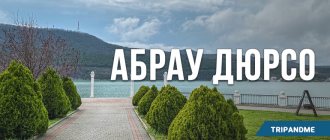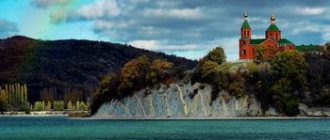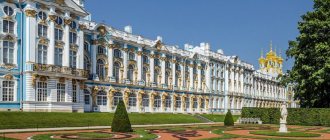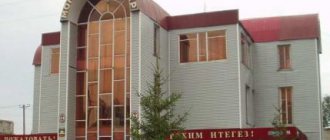Kosteryovo
Kosteryovo is the youngest city in the Petushinsky district and one of the smallest cities not only in the district, but in the entire Vladimir region, only Kurlovo is smaller. Previously, these lands were occupied by impenetrable dense Shern forests, and the only means of communication were rivers. The Klyazma, which flows today through the city of Kosteryovo, was in the past a navigable river. Wood used to be floated along the Lipna, the riverbed of which also passes through the city territory. The forests were rich in valuable tree species. Zaklyazma pine was used to build houses, aspen - to build wells, oak - to make furniture.
The village of Kosteryovo owes its birth to two factors: the construction of a railway through these lands in 1861 and the need of a glass factory located in the village of Misheron (today in the Shatura district of the Moscow region) for a transshipment base on this railway line.
The construction of the railway was entrusted to the private company of the Frenchmen Fitingof and Desroches. In 1865, the construction of the Bormin platform was completed. In 1888, a station was opened, which was built by the owners of the Misheronsky glass factory, brothers Nikolai and Ivan Kosterev, who exported glass products from the factory they owned from across the Klyazma for further loading into wagons. The station got its name from the surname of the Kosterev brothers. At the same time, agents of the manufacturers Morozov from Orekhovo-Zuev and Losev from Sobinka organized warehouses at the station for timber, which was transported from the forest dachas beyond Klyazma, which belonged to the manufacturers.
Ivan Ivanovich and Nikolai Ivanovich Kosterev, owners of Misheron Glass, inherited the plant from their father Ivan Andreevich Kosterev. Ivan Kosterev built on the railway tracks not only a station building, but also a post office, a two-story residential house for himself (today it is the Basic School), and also a house for the estate manager. A spare railway line was built for wagons to the finished product. Since the railway station was built on the land of the peasants of the village of Bormino, then, according to the traditions of those times, it had to be called Bormino. However, the Ministry of Railways decided to name the station after Ivan Ivanovich Kosterev as a sign of deep respect for the merits of the manufacturer. Subsequently, the name was transferred to the city.
In 1894, a wealthy peasant Fotiy Utkin, a native of the village of Maksimikha, Bereznyakovsky volost (Sudogodsky district, Vladimir province), opened a handicraft workshop in which he made wooden components for textile machines. He asked the peasants of the village of Bormino to give him a plot of land. At the meeting, the peasants decided to lease three acres of land next to the railway to Utkin. In 1900, Fotiy Utkin expanded his workshop, built new buildings, installed a small engine, and machines and primitive machines appeared. The workshop was transformed, essentially turning into a factory; spindles, reels and spools began to be produced there.
According to the List of populated places of the Vladimir province for 1905, at the Kosteryovo station of the Moscow-Nizhny Novgorod railway there were only 5 households, in which there were 47 residents of both sexes. In the village at the Kosterev glass factory there were 42 courtyards, in which 362 people lived.
In the fall of 1905, Utkin’s factory burned down, but Photius’s grandchildren, Ivan and Nikifor Utkin, who continued their grandfather’s work, built new capital factory buildings made of brick, bought English woodworking machines, and a new powerful and modern steam engine. This is how the factory of the Trading House of brothers Nikifor and Ivan Utkin was founded for the production of spindles, bobbins, shuttles, and reels. Subsequently, the factory became the largest enterprise in the Petushinsky district - a plant for technical plastic products named after. Comintern (since December 1972), which supplied textile enterprises throughout the Soviet Union and many countries of the world with its products. The plant became a city-forming enterprise; in its heyday, the number of its employees exceeded 4 thousand people. And in 1971 he was awarded the Order of the Red Banner of Labor.
In 1939, the village at the Kosteryovo reel and shuttle plant received the status of an urban village. The Comintern Plant (since 1972) developed successfully, and along with it, the social infrastructure of the village expanded - a swimming pool and a gym appeared here, the first in the Petushinsky district.
By the Decree of the Presidium of the Supreme Soviet of the RSFSR dated July 30, 1981, the working village of Kosteryovo was given the status of a city. Residential neighborhoods appeared in the city, a clinic and a city hospital, kindergartens and nurseries, two high schools, a stadium, a House of Culture, and a dispensary were built.
Kosterevo
The modern city limits include the former Fedoseev churchyard. The church in the churchyard existed in the first half of the 17th century; in 1655, the Church of the Exaltation of the Holy Cross was transferred from the Trinity estates to the Vladimir tithe of the patriarchal region. In 1700, a new church was built on the churchyard, consecrated in honor of the same holiday.
In 1815, on the site of the former wooden one, the white stone Church of the Exaltation of the Cross with a bell tower was built[3].
The village of Kosteryovo arose when the Kosteryovo railway station was opened in 1890. The station got its name from the surname of the owners of the Misheronsky glass factory, brothers Nikolai Ivanovich and Ivan Ivanovich Kosterev.
In 1894, in Kosteryovo, a wealthy peasant Fotiy Utkin, a native of the village of Maksimikha, Bereznikovsky volost, Sudogodsky district, organized the first workshop for the repair of textile equipment. In the fall of 1905, the workshop burned down, and instead a new factory was built by Photius’s grandchildren Nikifor and Ivan, which later grew into a large reel-and-shuttle plant. On January 7, 1939, Kosterev was given the status of an urban-type settlement at the reel-shuttle plant (since December 1972, the Comintern Technical Plastic Products Plant).
During the Great Patriotic War, the plant carried out orders for the production of products for the front (boxes for shells, skis, mine bodies, handles for sapper shovels, clothing for soldiers). In the Kosteryovo station camp, the following were formed: in September 1941, the 1st separate tank brigade, on February 16, 1942, transformed into the 6th Guards Tank Brigade for courage and heroism; in November 1941, the 31st Tank Brigade; from May 3 to May 30, 1942, the 113th Tank Brigade, which became part of the 15th Tank Corps on June 3; From July 18 to July 22, 1942, the 254th Tank Brigade was formed, and from August 5 it participated as part of the 64th Army in the Battle of Stalingrad. Since 1964, in the vicinity of the village, in the military town of Kosteryovo-1, the 4th Central Red Banner Officer Course of Anti-Aircraft Missile Forces of Air Defense was stationed.
Thanks to the successful development of the city-forming enterprise, which employed about 4.5 thousand people during its heyday, the social infrastructure expanded: the first gym and swimming pool in the Petushinsky district appeared in Kosteryovo. In 1964, the first multi-storey building was built in the Polevoy microdistrict; since the early 1980s, the Tsentralny microdistrict has been built up. In October 1979, the village of Novaya was included in the village of Kosteryovo[4]. On July 30, 1981, by decree of the Presidium of the Supreme Soviet of the RSFSR, the urban-type settlement of Kosteryovo was given the status of a city.
Kosterevo: what kind of giant factory was there and who developed weapons of mass destruction... mosquitoes
Today in the series “Small Towns of Russia” we will go to Kosterevo, Vladimir region. There, at the end of the 19th century, a small factory appeared where they made coils and bobbins, and also repaired weaving machines. In the 20th century it grew into a large plant. It closed in the 90s, but residents are still waiting for its revival.
Noon in Kosterevo. Walking along the empty streets, we suddenly thought that we were being deceived. That this is not a real city, but a scenery: cardboard houses, fake clotheslines. A voice from the window helped me wake up.
Before cheering for our athletes with validol, pensioners from Kosterev carefully watch the news: they are waiting for someone to tell them how to survive the crisis.
Valentina Shchukina, resident of Kosterev:
“The Federation Council discussed the anti-crisis program. Of course, we are interested in pension indexation.”
For twenty years now, many Kosterevka residents have been wondering when the plant of plastic technical products will be resurrected. More than 3 thousand people worked there, almost every Kosterevskaya family.
The life of the plant was cut short in the 90s, and on the site of one huge enterprise, a real city within a city, today new companies operate, about 25 of them. The owners bought the buildings of the old factory workshops. This is the last one, which is still waiting for its owner. There were administrative premises here. There were workshops and factory transport nearby.
The old giant plant cannot be returned. But his former employees still can’t believe it. Why - explains Alexey Ermakov. He worked at the plant, and now he works in one of the old workshops at the new production.
Alexey Ermakov, deputy chief engineer of the enterprise:
“It was not only an enterprise, it was infrastructure, life. These are houses, these are pioneer camps, these used to be farmsteads. Boiler rooms, heat, electricity. All this lay on the shoulders of the plant.”
It supplied the entire light industry from Vladivostok to the western borders of the country. The products went to Uzbekistan and Tajikistan, the Baltic states and Cuba, recalls another employee of the plant, Alexander Potapov. He spent 2 years of his working experience in Italy, accepting equipment for Soviet production. He says that it was possible to identify our people abroad instantly.
Alexander Potapov, resident of Kosterev:
“Well, I say right away - the Russians are coming. This is with a pot-bellied briefcase and a “Bolshevik” cut suit. I immediately changed my clothes.”
A 100% foreigner is looking at us from old photographs. A handsome young man in a good suit - he could easily pass for one of his own even in Sicily, even in business Milan. And we asked: hasn’t a Soviet citizen ever dreamed of waking up as an Italian?
Alexander Potapov, resident of Kosterev:
“When I came to Italy, I thought everyone there plays guitars and mandolins and sings under the balcony. So I’ll tell you: nothing like that! At the stations, when we entered the station, everyone was sitting, silent for some reason. Everyone is thinking about something, but we have young people here - ha ha ha! Laughter. There is silence there.”
A tea set remained in memory of the Italian trip. From the bankrupt plant - half a city in old factory armor.
Boris Titanov, resident of Kosterev:
“The blow was strong, unemployment was terrible, and it still is, as they say. We work in Moscow: some in security, some in their specialty.”
The employees of the company where Alexey works were lucky - they found good jobs in the city. They make parts for agricultural, road and military equipment. They have even developed weapons of mass destruction...of mosquitoes.
Alexey Ermakov, deputy chief engineer of the enterprise:
“After some time, the flow fan turns on. These mosquitoes, they get carried away by the air flow, pass through the electrical discharges and end up in the pan.”
The average Russian family cannot yet afford Kosterev’s know-how—one system costs 30 thousand rubles. Live alarms are not cheaper, but they are popular near Vladimir.
We did not have time to find out where the owner of the loud car came from. But somehow I can’t believe that he’s from Kosterevo
“The fewer friends, the more dogs. This happens to me in life. I have an easier relationship with dogs than with people,” says a city resident.
In a small town, all life is built on relationships with each other. Everything is at your fingertips here. While you walk from home to work or school, you will say hello more than once and, perhaps, you will be late, but you will not pass by.
Natalya Peregudova, resident of Kosterev:
“Yes, perhaps we don’t have it like in a metropolis, but we have something that others don’t have - this cohesion, friendliness. We know everyone in our city."
Natasha came to a concert of musicians from Nizhny Novgorod. This is a big event for the city, so Vlad, who you see more often at the skating rink, and Kristina from the neighboring village, where tour performers do not come, came.
Kristina Danilyuk, resident of Trud village:
“This happens very rarely, mostly we perform ourselves. We have a lot of kids from the village who go to the choir and dance groups.”
On stage there is a young duet: accordion player Venedikt Peunov, at the piano - Ekaterina Knyazkova.
We did not expect to hear this at the Vladimir school.
This is how they play on the capital’s stages and contemporary art festivals. But the public was ready. Where traditions and relationships with each other are carefully preserved, they know how to appreciate everything real: be it words, deeds or high art. A city that has long lived on plastic has emerged thanks to glass. 125 years ago the Kosterevo station was opened there. She was named after the Kosterev brothers. They built a railroad for their glass factory.







